In the ever-evolving landscape of higher education, facilities management plays a crucial role in ensuring the smooth operation and sustainability of academic institutions. With a significant portion of skilled professionals nearing retirement and fewer young talents stepping in, developing and implementing strategic recruitment initiatives is imperative. This article explores the necessity of innovative leadership and strategic recruitment to future-proof educational facilities management, drawing insights from industry leaders and current trends.
The Importance of Strategic Recruitment
The skilled trades sector is facing a critical juncture. According to industry reports, over 20 percent of construction workers are aged 55 or older, leading to high retirement rates and a growing need for new talent (US Chamber) (ABC). Jeff Benjamin, associate vice president/chief facilities officer at the University of Georgia, highlights the urgency: “Every organization faces limited resources, and it is easy to justify not funding professional development. However, a strong leader must fight for this investment, as the return on investment is tremendous.”
Strategic recruitment is not just about filling positions; it is about anticipating future needs and ensuring a steady pipeline of skilled professionals. This requires a multifaceted approach that includes developing internal talent, creating appealing career pathways, and leveraging partnerships with educational institutions.
Recruiting Innovative Leaders
Innovative leadership is essential for navigating the complexities of modern facilities management. Leaders like Jeff Benjamin emphasize the need to overcome barriers such as limited resources and organizational inertia. “Battling inertia or the ‘we have always done it this way’ syndrome is especially challenging,” Benjamin notes. Innovative leaders are those who can envision and implement new strategies, engage in continuous learning, and inspire their teams to do the same.
To attract such leaders, educational institutions must highlight the opportunities for innovation and impact within their facilities management roles. Offering professional development opportunities, clear career progression, and a supportive work environment can make these positions more appealing to top talent.
How Generational Diversity Impacts the Interview and Recruitment Process
In today’s diverse workforce, understanding generational nuances is crucial for effective recruitment and retention strategies. Each generation brings distinct values, communication styles, and motivators to the table. As Baby Boomers retire, and Millennials and Gen Z begin to dominate the workforce, companies must adapt their recruitment processes to appeal to these emerging talent pools. Here is how generational diversity impacts the interview and recruitment process, and what you can do to ensure your organization attracts and retains the best candidates from all age groups.
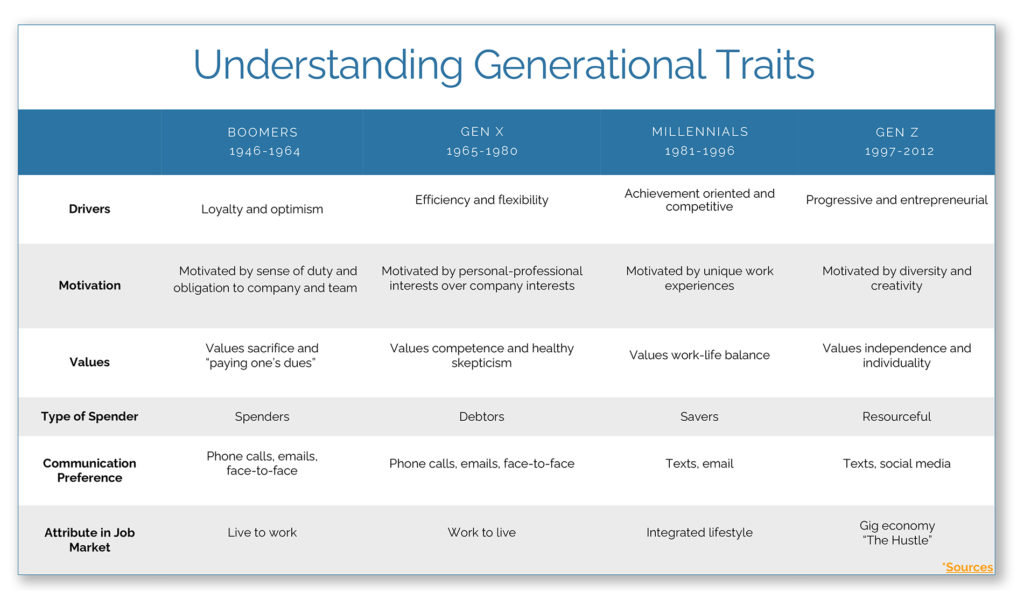
Source: Generational Mindsets. SIR Institute for Tomorrow. SIRhq.com
Know Yourself and Your Interview/Search Committee
Before embarking on the recruitment journey, it is essential to understand the composition and pending biases of your interview or search committee. Awareness of your team’s generational makeup can help mitigate unconscious bias and ensure a more inclusive hiring process. This understanding will enable you to tailor your interview techniques and questions to resonate with candidates from different generations.
Additionally, it is important to consider the level of experience within your hiring team/search committee. For instance, if all members of your committee have a decade of experience, they might inadvertently set a higher benchmark for candidates applying for entry-level positions. This can create an unrealistic expectation of the necessary experience for these roles. Instead of focusing solely on markers of extensive experience, it can be more effective to evaluate candidates based on competency and potential. This approach allows your organization to compete for a broader range of candidates in the market, ensuring you do not limit your talent pool to those with similar extensive experience backgrounds. By emphasizing competencies and values, your recruitment process can become more dynamic and inclusive, aligning better with the diverse skills and perspectives needed in today’s workforce.
Moreover, incorporating generational diversity within your hiring team/search committee can further enhance this process. A diverse committee brings various perspectives and experiences, reducing the likelihood of homogeneous thinking and biased decision-making. This diversity can help recognize and value different competencies and potential in candidates beyond just their years of experience. By having a multi-generational search committee, your organization can better assess and appreciate the unique strengths that candidates from all age groups bring to the table.
Generational Nuances for Job Postings
Crafting job postings that appeal to a multigenerational audience requires an understanding of the different preferences and expectations of each generation. Incorporating elements that resonate with all age groups ensures that your postings attract a diverse and dynamic workforce.
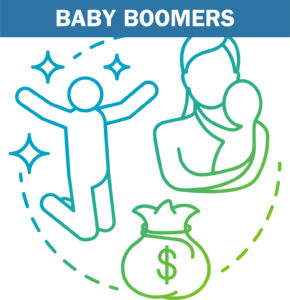 Baby Boomers: Focus on stability, teamwork, and mentorship opportunities. Use language that emphasizes loyalty and tradition. Highlight loyalty programs and team projects.
Baby Boomers: Focus on stability, teamwork, and mentorship opportunities. Use language that emphasizes loyalty and tradition. Highlight loyalty programs and team projects.
Gen X: Highlight work-life balance, responsibility, and autonomy. Phrases like “flexible scheduling” and “independent work environment” resonate well. Emphasize flexible schedules and independent roles.
Millennials (Gen Y): Emphasize growth opportunities, variety, and a sense of being heard. Mention social impact, career development programs, and a collaborative culture. Promote career development, collaborative culture, and exposure to a variety of responsibilities.
Gen Z: Focus on compensation, diversity, and utilizing current technological tools and resources. Highlight and include references on how the organization leverages existing technology to enhance efficiency and productivity—which appeals to Gen Z’s comfort with digital tools. Highlight aspects of the benefit package that meet them where they are in life, inclusivity, and tech tools used.
Advertising Jobs and Benefits to Multigenerational Candidates
Creating effective job advertisements involves understanding what motivates each generation. Based on data from over 3,000 interviews, the top three factors influencing job seekers across generations are meaningful work, growth opportunities, and workplace culture. Here are some best practices for addressing these factors in your job advertisements:
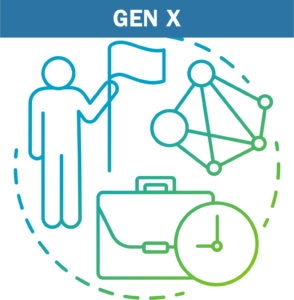 Meaningful Work: Highlight the impact of the role on the organization and community.
Meaningful Work: Highlight the impact of the role on the organization and community.
Growth Opportunities: Emphasize career development programs and paths for advancement.
Workplace Culture: Showcase a supportive, inclusive, and dynamic work environment.
Comprehensive Compensation Packages
In job postings, it is essential to highlight the entire compensation package rather than just the salary. A comprehensive package that includes benefits tailored to the unique concerns and desires of different generations can significantly enhance the appeal of a position. For instance, while baby boomers might prioritize a robust retirement plan, health insurance, and wellness programs, Gen X may place higher importance on benefits like student loan repayment assistance or mental health benefits.
Preparing for Your Audience/Candidate/Interview
Tailoring your interview approach to match the communication styles and values of different generations can significantly enhance the candidate experience. Here is an overview of generational communication styles and values:
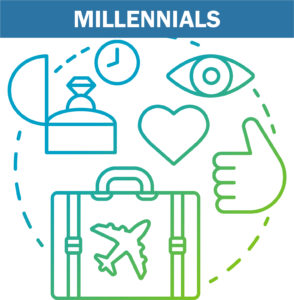 Baby Boomers: Prefer phone calls, value tradition and loyalty, and are team-oriented.
Baby Boomers: Prefer phone calls, value tradition and loyalty, and are team-oriented.- Gen X: Communicate via email and text, prioritize work-life balance and responsibility.
- Millennials: Use text and social media, seek variety and a sense of being heard.
- Gen Z: Native to mobile devices and FaceTime, value compensation and diversity.
In what ways have you augmented your interview process to create a more inclusive communication style?
Statistics Highlighting Generational Shifts
Understanding these demographic shifts is crucial for developing effective recruitment strategies.
- By 2030, Millennials and Gen Z are expected to make up most of the workforce (Johns Hopkins.)
- The retirement of Baby Boomers is contributing to a forever labor shortage. (The Insider.)
Opening Your Recruitment Funnel
An inclusive recruitment process requires assessing whether current requirements are screening people in or out. For instance, consider the necessity of certain non-essential certifications or arbitrary years of experience, which might exclude talented individuals who possess the needed skills but lack formal credentials. (This does not include essential certifications that are legally required to perform the work.) Instead, emphasize practical skills and hands-on experience, and use practical assessments or skill-based tests later in the hiring process to evaluate candidates more fairly. By rethinking traditional requirements and focusing on competencies and potential, you can widen your recruitment funnel to attract a more diverse and capable talent pool. This approach not only enhances fairness but also helps in identifying qualified candidates.
Identifying Unconscious Bias
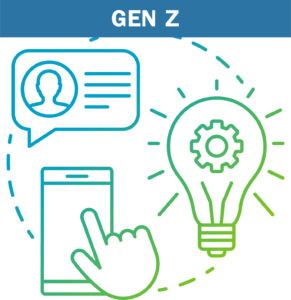 Unconscious biases can significantly impact recruitment. Common biases include assumptions about job stability based on frequent job changes, retirement plans based on age, and the ability to offer growth based on perceived candidate needs. Additionally, biases may arise from judging candidates by the format or style of their resumes, rather than their actual skills and experience. Addressing these biases requires awareness and proactive strategies to ensure fairness, such as focusing on hands-on assessments and practical demonstrations relevant to the job.
Unconscious biases can significantly impact recruitment. Common biases include assumptions about job stability based on frequent job changes, retirement plans based on age, and the ability to offer growth based on perceived candidate needs. Additionally, biases may arise from judging candidates by the format or style of their resumes, rather than their actual skills and experience. Addressing these biases requires awareness and proactive strategies to ensure fairness, such as focusing on hands-on assessments and practical demonstrations relevant to the job.
Structuring an Inclusive Interview Process
An inclusive interview process for facilities workers should cater to practical skills and clear expectations. Best practices include:
- Providing Practical Test Details in Advance: Share the types of practical skills or tasks that will be assessed during the interview. This allows candidates to understand what will be expected and reduces anxiety, promoting a fairer evaluation based on real abilities.
- Interview Times: Offer flexible scheduling for interviews to accommodate candidates’ varying availability, which might be influenced by their life stage, such as schooling for younger candidates or caregiving responsibilities for older candidates.
- Transparency in Career Pathing:
- Career Development: Highlight opportunities for career development and growth within the organization, which can appeal to the younger generations seeking progression. Career development is not always up, it can be the breadth and depth of skills acquired.
- Mentorship Programs: Promote and describe mentorship programs that pair employees of different generations to foster knowledge sharing and mutual respect.
By implementing these practices, you can create a welcoming and fair interview process, helping you attract and select the best candidates from a diverse talent pool.
Conclusion
Generational diversity in the workforce brings a wealth of perspectives and skills, making it essential to tailor recruitment and interview processes appealing to all age groups. Organizations can create more inclusive and effective recruitment strategies by understanding the unique values and communication styles of different generations. Embracing these practices attracts top talent and fosters a dynamic and innovative workplace poised for future success.
Marcie Glenn is the CEO and chief talent strategist, and Justin Warner is the marketing manager, at Another Source, a national recruiting organization serving higher education. You can contact Marcie at [email protected]. This is their first article for Facilities Manager.



